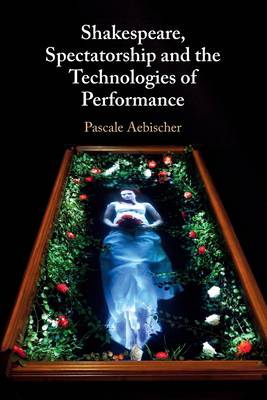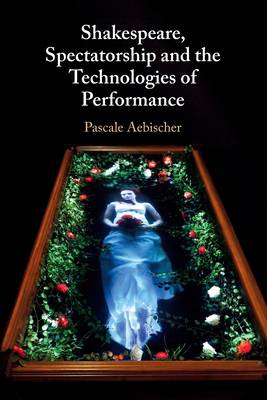
- Afhalen na 1 uur in een winkel met voorraad
- Gratis thuislevering in België vanaf € 30
- Ruim aanbod met 7 miljoen producten
- Afhalen na 1 uur in een winkel met voorraad
- Gratis thuislevering in België vanaf € 30
- Ruim aanbod met 7 miljoen producten
Zoeken
€ 43,45
+ 86 punten
Omschrijving
Shakespeare, Spectatorship and the Technologies of Performance examines how rapid changes in performance technologies affect modes of spectatorship for early modern drama. It argues that seemingly disparate developments - such as the revival of early modern architectural and lighting technologies, digital performance technologies and the hybrid medium of theatre broadcast - are fundamentally related. How spectators experience performances is not only affected in medium-specific ways by particular technologies, but is also connected to the plays' roots in early modern performance environments. Aebischer's examples range from the use of candlelight and re-imagined early modern architecture, to set design, performance capture technologies, digital video, social media, hologram projection, biotechnologies and theatre broadcasts. This book argues that digital and analogue performance technologies alike activate modes of ethical spectatorship, requiring audiences to adopt an ethical standpoint as they decide how to look, where to look, what medium to look through, and how to take responsibility for looking.
Specificaties
Betrokkenen
- Auteur(s):
- Uitgeverij:
Inhoud
- Aantal bladzijden:
- 258
- Taal:
- Engels
Eigenschappen
- Productcode (EAN):
- 9781108430357
- Verschijningsdatum:
- 18/08/2022
- Uitvoering:
- Paperback
- Formaat:
- Trade paperback (VS)
- Afmetingen:
- 152 mm x 229 mm
- Gewicht:
- 353 g

Alleen bij Standaard Boekhandel
+ 86 punten op je klantenkaart van Standaard Boekhandel
Beoordelingen
We publiceren alleen reviews die voldoen aan de voorwaarden voor reviews. Bekijk onze voorwaarden voor reviews.











